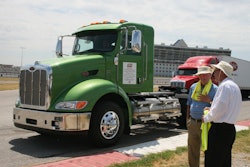An industry economist and three fleet executives shared their thoughts on the outlook for trucking and trucking equipment in the near future at the Avondale Partners Trucking Forum in Dallas at the 2011 Commercial Vehicle Outlook Conference.
Recognizing public fears over a double-dip recession and lack of investor confidence, Donald Broughton, Avondale Partners managing director, says such angst may be premature.
“Right now there’s market uncertainty, but freight flow says otherwise,” says Broughton, pointing out that there hasn’t been a contraction in the economy without a contraction in freight volume. “Unless it really is different, freight signals continued expansion in the economy. Intermodal, air freight and carloads figures also point to growth period, not contraction.”
Broughton also noted that elimination of roughly 12 percent of truck capacity through trucking failures during the last recession and fleet downsizing by existing carriers should help elevate freight rates.
Regulatory pressures such as the Federal Motor Carrier Safety Administration’s Compliance Safety Accountability (CSA) program and proposed hours-of-service changes are having an impact on driver recruiting and productivity.
“The demand for brand new drivers will increase because they come with a clean CSA score,” says Marc Rogers, senior vice president-van truckload for Schneider National. “That is an advantage to companies, but the risk is how those drivers will perform.”
Rogers says the demand for new driver recruits will far exceed driver schools’ ability to process them, and regulations and new drug testing proposals will make some existing drivers unemployable. “I don’t think we’ve seen the full impact of CSA yet,” he adds.
Stephen Russell, chairman and CEO for Celadon, agrees. “The American Trucking Associations says CSA will throw 5 to 7 percent of drivers off the road. Our internal study says it’s more like 10 percent.”
The industry trend toward shorter hauls and regionalization are also impacting the way fleets operate. In 2009, USA Truck changed its distribution pattern toward a more regional model. “The result is length of haul has shortened dramatically,” says Cliff Beckham, director, president and CEO of USA Truck.
Today, he says, four out of five USA Truck’s truckloads move under 500 miles. “Those that will win will be those that adapt to regionalization because that is where customers need our capacity.”
Rogers also sees growing demand for regionalized truck operations. “There has been continuing pressure to regionalize our business,” he says. “The regional environment continues to grow and we are repositioning ourselves there.” While regional hauling makes up 45 percent of Schneider’s current operation, Rogers expects that to grow to 55 percent in the next two years.
As regionalized trucking operations proliferate, the way fleets spec equipment may also be changing. Beckham says his company is trending toward smaller sleepers and fewer double sleepers and plans to use day cabs more heavily in its intermodal operations. “Sleepers aren’t going to have mileage put on them like years past,” Beckham says. “That will mean a four-year life rather than three and a half years.”










